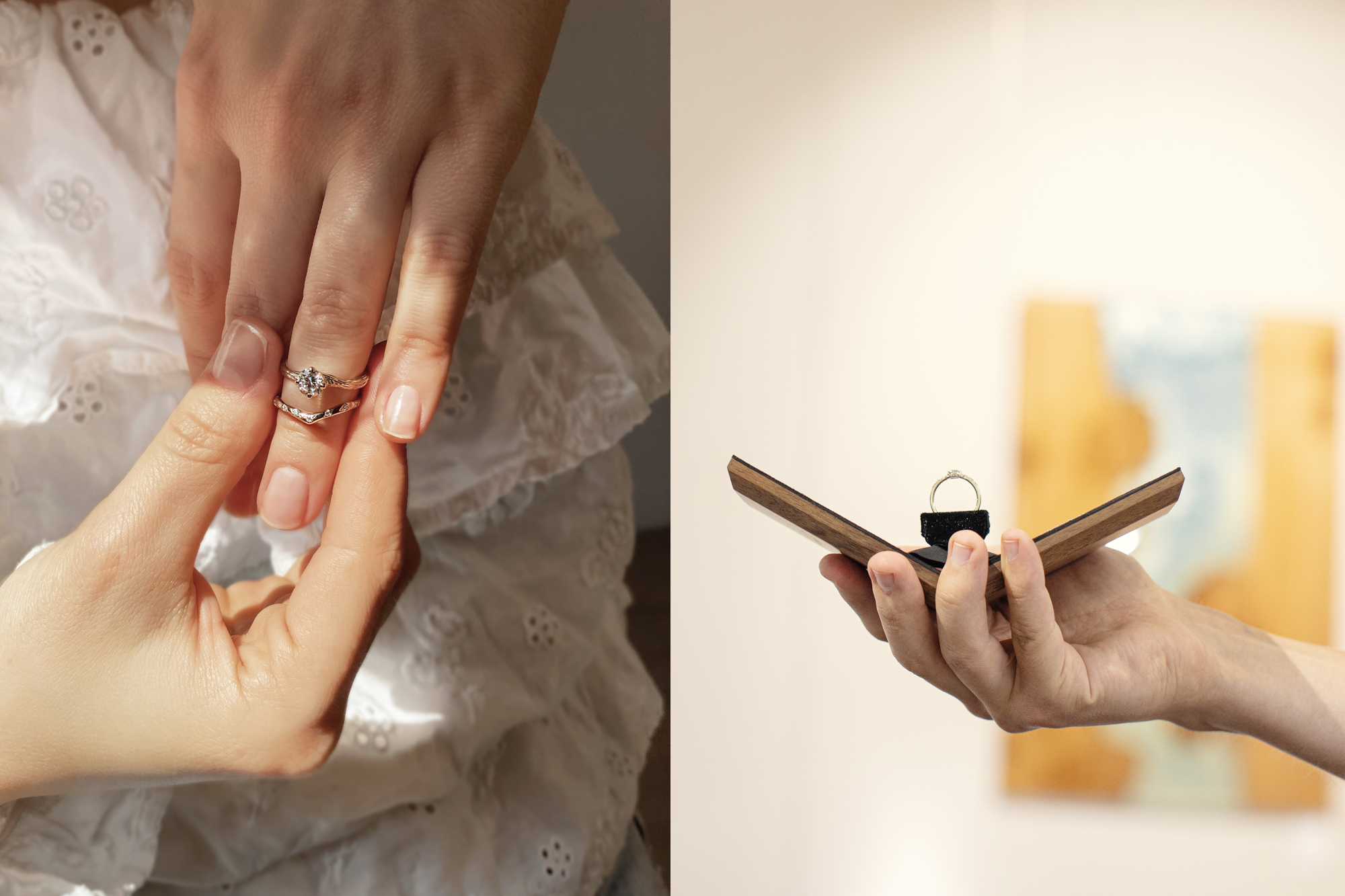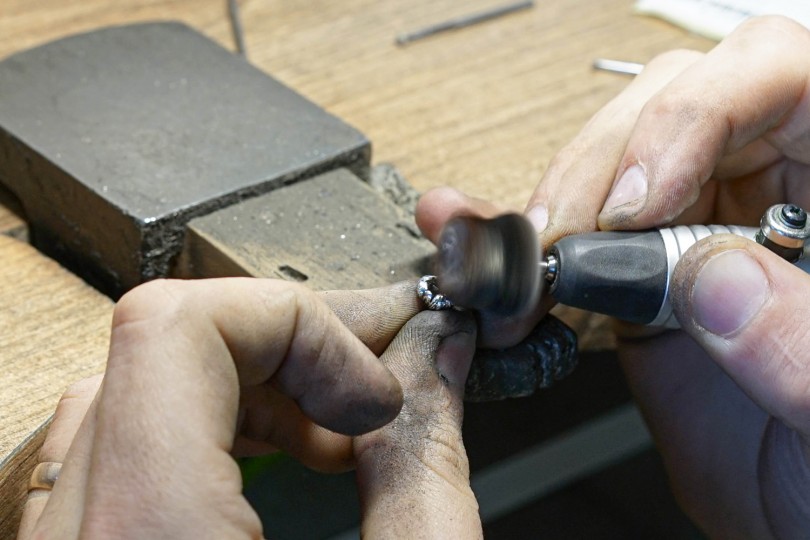Everything you need to know about Jewelry Care and Maintenance
 14248
14248Hey there jewelry lovers! Are you tired of seeing your favorite pieces lose their sparkle and shine over time? Whether you're a fashionista with a collection of statement rings or a minimalist with a few delicate jewelry pieces, taking care of your jewelry is essential for keeping it looking its best. In this article, we're going to share some tips and tricks for jewelry care that will help you keep your treasures looking as good as new.
When is it Better to take your Ring off?

- Take off your ring before going to bed. This will allow your skin to breathe, and your fingers won't swell. Rings with a simple shape, plain, without inserts, or embossed surface are easier to take off.
- Avoid wearing your ring while swimming. Cold water can cause your fingers to narrow, which may lead to your jewelry falling off.
- Avoid contact with sand, as it can easily scratch metal. Sand is harder than precious alloys.
- Don't wear silver jewelry while bathing in hot springs. Thermal waters have a high sulfur content, which can cause your jewelry to become cloudy.
- Take off your ring before doing sports or other activities that cause metal to hit or rub against various surfaces.
- Take off your ring before any cosmetic procedures to avoid cosmetics clogging in the hard-to-reach places. If you wash your hands with a ring on, rinse the jewelry well.
- Remove your ring before cleaning or performing other actions that expose it to contact with aggressive chemicals.
By following these simple tips, you can keep your rings looking beautiful for years to come.
How to take care of Gold and Silver Jewelry
Gold jewelry is a popular choice because of its beauty and durability, but it still requires proper care to maintain its shine and luster. Here are some tips for taking care of your gold or silver jewelry:
Store your jewelry separately
This recommendation applies to any type of precious metal. To prevent scratching or damage, store your gold jewelry in a soft cloth or a jewelry box with compartments. This will also prevent tangling and knotting of necklaces and bracelets.
Avoid exposure to chemicals
The beautiful shine of gold jewelry can be easily tarnished by certain chemicals, particularly bleach and chlorine. If you notice significant wear on your gold bracelet, anklet, or ring, it's possible that it has been damaged by exposure to these chemicals.
Gold is a relatively soft metal, and it's often combined with other metals to increase its durability. However, bleach and chlorine are part of a group of elements known as the halogens, which react violently with metals. Over time, exposure to these elements can weaken the metal, making it brittle.
Clean your gold jewelry regularly
A good care practice to follow is to regularly clean your gold jewelry. We recommend using a mild soap and gently rubbing the jewelry piece with a soft cloth or toothbrush to remove any dirt or grime. Be sure to rinse the jewelry thoroughly with clean water and dry it in the end.
However, sometimes it can be difficult to clean hard-to-reach places in your jewelry, such as between the prongs of a setting or the links of a chain. In these cases, it's best to bring your jewelry to a professional jeweler for cleaning. He has the expertise and tools needed to carefully clean any dirt, grime, or debris that may be stuck in difficult to reach spots, without causing any damage to the piece. Plus, you could also get a free inspection of the jewelry piece for any potential damage or wear and tear that may require repair.
Bonus tip: Clean your ring at least once a week to maintain its original shine and sparkle. Additionally, it is recommended to have your ring checked by a professional jeweler at least twice a year to ensure the security and integrity of its prongs and settings.
Why does Jewelry become tarnished and lose its shine?
- Rings made of silver and low-fineness gold (less than 14K) can become tarnished when stored constantly in the open air.
- This effect occurs rapidly in humid environments.
- Hot tubs and high-temperature springs contain sulfur in their waters, which leads to tarnishing of jewelry.
- Keep in mind that some skincare products contain sulfur. Avoid contact with jewelry to prevent tarnishing.
Tarnish is a thin layer of oxide on the surface of metals. It can be easily removed with a soft polishing cloth for jewelry. If you wear a ring every day, tarnish won't develop quickly, as the friction of the metal against skin and clothes will help preserve its shine.
Tarnishing of higher-fineness jewelry, such as gold (18K), platinum, and palladium, occurs less frequently. These precious metals do not tarnish under normal conditions. The higher the content of these metals in the alloy, the less likely they are to react under the influence of external factors.
How to Clean Jewelry at Home
When it comes to cleaning your jewelry at home, there are many methods that can be damaging or even dangerous. Using warm water and dishwashing detergent (without phosphates and lemon) is a completely safe and effective way to remove dirt and grime.
Before you begin cleaning, pay attention to the surface on which you will be working.
Avoid cleaning on hard surfaces like granite countertops or kitchen sinks, as slippery jewelry can easily slip and get damaged. Instead, place a towel down to provide a soft surface to work on.
Once you have prepared your workspace, follow these steps:
- Rinse the jewelry thoroughly in warm water.
- Take a soft toothbrush, preferably a child's toothbrush, and apply a small amount of detergent to it.
- Use light strokes to gently clean the jewelry.
- Rinse the jewelry again and dry it thoroughly with a soft, lint-free cloth
If your ring contains stones such as emerald, opal, pearl, or turquoise, it is best to entrust the cleaning to a professional jeweler. Additionally, avoid using toothpaste for cleaning as it can be abrasive and cause damage to precious metals and gemstones.
Below is a table that provides information on the cleaning parameters and methods for different types of stones:
| Stone | Mohs hardness | Strength | Steam cleaning | Ultrasonic cleaning |
| Amethyst | 7 | High | Risky | Allowed |
| Aquamarine | 7,5-8 | High | Risky | Risky |
| Citrine | 7 | High | Risky | Allowed |
| Diamond | 10 | High | Risky | Allowed |
| Emerald | 7,5-8 | Low | Never | Never |
| Garnet | 6,5-7,5 | Medium | Never | Allowed |
| Iolіt | 7-7,5 | High | Risky | Allowed |
| Morganite | 7,5-8 | High | Risky | Allowed |
| Onyx | 6,5-7 | High | Risky | Allowed |
| Opal | 5,5-6,5 | Medium | Never | Never |
| Pearl | 2,5-4,5 | High | Never | Never |
| Ruby | 9 | Excellent | Allowed | Risky |
| Sapphire | 9 | Excellent | Allowed | Allowed |
| Smoky quartz | 7 | High | Never | Allowed |
| Spinel | 8 | High | Allowed | Allowed |
| Tanzanite | 6,5-7 | Medium | Never | Allowed |
| Topaz | 8 | Low | Never | Allowed |
| Tourmaline | 7-7,5 | Medium | Allowed | Allowed |
| Turquoise | 5-6 | Medium | Never | Never |
| Zircon | 6,5-7,5 | Medium | Allowed | Allowed |
Hardness and durability are not directly related, as shown in the table. Hardness is characterized by scratch resistance, the ability of materials to resist abrasion. Durability is a measure of a mineral's ability to absorb energy, as well as a measure of the likelihood that a material will split or break.
Conclusion
In conclusion, taking care of your jewelry is essential to keep it looking as good as new. By following some basic rules, such as storing it separately, avoiding exposure to chemicals, and cleaning it regularly, you can keep your jewelry in great condition for years to come. Remember, taking care of your jewelry not only ensures its longevity but also helps preserve its sentimental and monetary value. So, take care of your precious pieces and enjoy their beauty for years to come!
Leave a comment via Facebook:
Kochut and our partners use cookies on this website. Some of them are required for the site to function properly, but the following cookies are optional:
— cookies that analyse website usage;
— cookies used to personalize the site;
— cookies used for advertising and social media purposes;





 28060
28060
